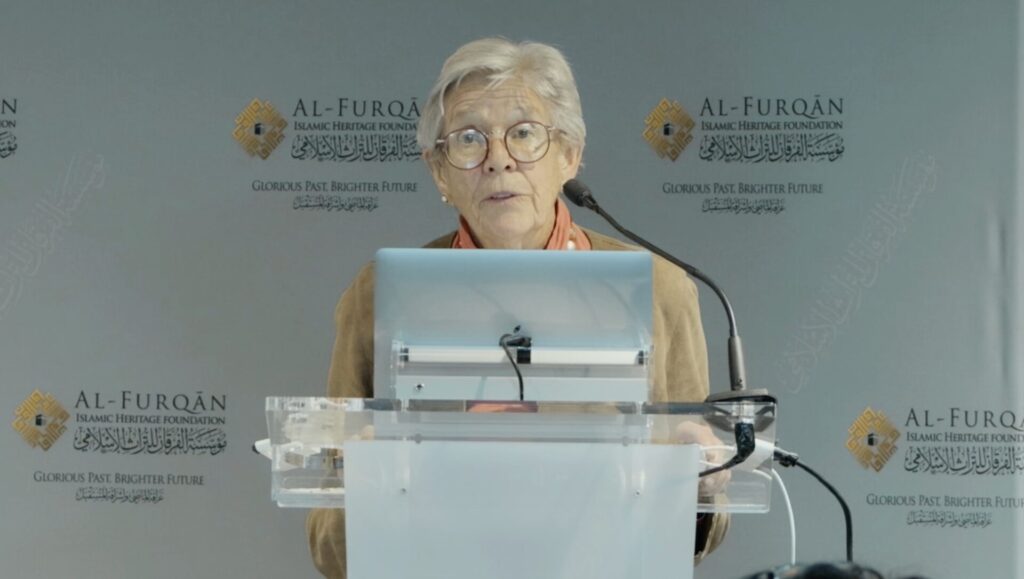Lecture by Prof. Sheila Blair
On Wednesday 16 October 2024, Al-Furqan Islamic Heritage Foundation organised a public lecture entitled "The Many Manuscripts of the Qur'an, their Settings, and their Uses", delivered by Prof. Sheila Blair, who recently retired from the Norma Jean Calderwood University Professorship of Islamic and Asian Art at Boston College and the Hamad bin Khalifa Endowed Chair in Islamic Art at Virginia Commonwealth University.

Mr Sali Shahsivari, the Managing Director of Al-Furqan, gave a brief introduction of the lecturer, an award-winning author whose special interests are the uses of writing and the arts of the Mongol period, especially architecture and manuscripts.
In his introduction Mr Shahsivari, also welcomed Prof. Jonathan Bloom, the lecturer's husband and colleague, who was present in the audience. The couple not only shared the aforementioned university positions, but they have also co-authored and co-edited a score of books and hundreds of articles on all aspects of Islamic art.
The lecture, which was held at the Foundation’s headquarters in London, is part of Al-Furqan’s series of Lectures on Islamic Heritage. It aims at "shedding further light into the various aspects of Qur'anic manuscripts," said Mr Shahsivari. "The manuscripts of the Qur'an represent and embody a complex interplay of faith, history, and art. Their diverse forms and uses reflect the rich tapestry of Islamic culture, and its enduring impact on the world," noted Mr Shahsivari. "We - at Al-Furqan - have initiated a number of projects and events pertaining to various aspects related to Qur'anic manuscripts," he explained.
In his opening remarks, Mr Sharaf Yamani, Chairman of the Board of Directors of Al-Furqan Foundation, welcomed the lecturer and attendants. He noted that Qur'anic manuscripts stand out for their deep connection to the sprit and soul of the Islamic faith. Mr Yamani said that the Founder of Al-Furqan, his father and His Excellency the late Shiekh Ahmed Zaki Yamani, believed that exploring the rich tapestry of Islamic heritage would undoubtedly help in bridging cultural divides – an objective that the Foundation has been working on for more than 35 years.
At the outset of her lecture, Prof. Blair noted that the Qur'an, traditionally revered as the literal word of God, was revealed orally, but soon committed to writing. Both oral and written versions have assumed a remarkably fixed form for nearly a millennium and a half, especially since the decision by the caliph 'Uthman c. 650 CE to unify the textual skeleton (rasm), she explained.
Despite this textual uniformity, manuscripts of the Qur'an vary widely in size, materials, format, layout, script, decoration and other features, Prof. Blair added, in a richly illustrated presentation surveying some of these many manuscripts, the settings for which they were made, and the multiple ways they were used.
Prof. Blair addressed the typical questions asked about individual manuscripts; Who made it? Who is its intended audience? What happened to it later? The lecturer also went into details about the information that could be obtained on a manuscript from examining the physical aspects of its parchment, such as guessing the geographical area from the type of animal skin used, and carbon dating etc.
The lecture concluded with a lively Questions and Answers session.

